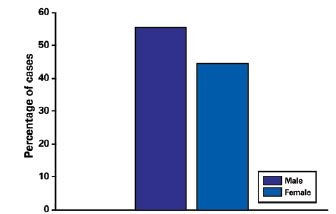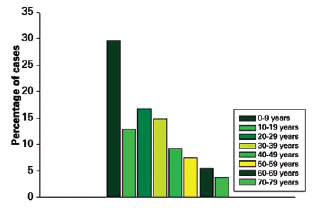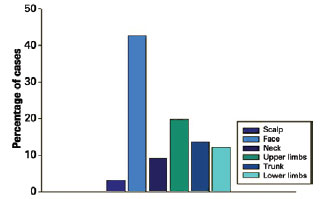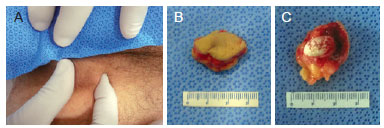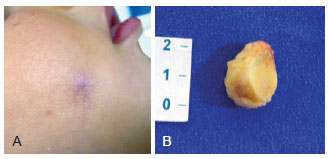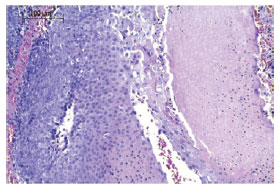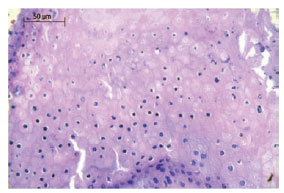ABSTRACT
BACKGROUND: Pilomatricoma (calcifying epithelioma of Malherbe) represents approximately 1% of all benign skin tumors. The aim of this retrospective study was to review the clinical and histopathological characteristics of this lesion in patients presenting to the Departments of Plastic Surgery and Pathology of a general hospital.
METHODS: Data regarding 68 lesions in 56 patients were reviewed. All patients underwent surgical excision of the tumors. The medical records were reviewed for gender, age, lesion location and size, preoperative diagnosis, recurrence, and particular histopathological characteristics.
RESULTS: Thirty-one patients (55.4%) were male and 25 (44.6) female. The lesions were distributed in the face (42.4%), upper limbs (19.7%), trunk (13.6%), lower limbs (12.1%), neck (9.1%), and scalp (3.1%). In one patient, the condition recurred following the first surgical treatment. Another patient had multiple presentation of her lesions, that appeared in several locations and five different occasions. A third patient was diagnosed with proliferating pilomatricoma. All neoplasms were benign lesions. Pilomatricomas were clinically diagnosed by the surgeons only in 19.7% of the cases.
CONCLUSIONS: Pilomatricoma should be considered in the differential diagnosis of nodules, especially those on the head and neck. Careful clinical examination and familiarity with the condition may lead to accurate diagnosis and appropriate treatment.
Keywords:
Pilomatrixoma. Skin neoplasms. Hair diseases.
RESUMO
INTRODUÇÃO: Pilomatricoma (epitelioma calcificante de Malherbe) representa cerca de 1% dos tumores benignos de pele. O objetivo deste estudo retrospectivo é rever as características clínicas e histopatológicas dessa lesão em pacientes tratados nos Departamentos de Cirurgia Plástica e Anatomia Patológica de um hospital geral.
MÉTODO: Dados relacionados a 68 lesões, presentes em 56 pacientes, foram revisados. Todos os pacientes foram submetidos a excisão cirúrgica dos tumores. Os seguintes aspectos foram estudados: gênero, idade, localização e tamanho das lesões, diagnóstico pré-operatório, recorrência e características peculiares à histopatologia.
RESULTADOS: Trinta e um pacientes eram do sexo masculino (55,4%) e 25, do feminino (44,6%). As lesões estavam localizadas na face (42,4%), membros superiores (19,7%), tronco (13,6%), membros inferiores (12,1%), pescoço (9,1%) e couro cabeludo (3,1%). Em um paciente, foi observada recorrência após o primeiro tratamento cirúrgico. Outra paciente apresentou lesões em vários locais, em cinco ocasiões diferentes. Um terceiro paciente teve o diagnóstico de pilomatricoma proliferante. Todos os tumores eram benignos. O diagnóstico clínico de pilomatricoma foi realizado pelo cirurgião em apenas 19,7% dos casos.
CONCLUSÕES: Pilomatricomas devem ser considerados no diagnóstico diferencial, especialmente dos nódulos de cabeça e pescoço. Exame clínico cuidadoso e conhecimento da lesão favorecem o diagnóstico preciso e, portanto, o tratamento adequado.
Palavras-chave:
Pilomatrixoma. Neoplasias cutâneas. Doenças do cabelo.


